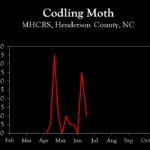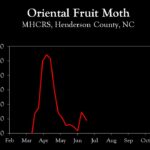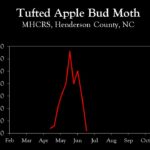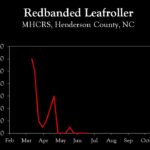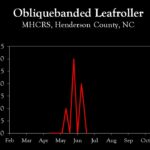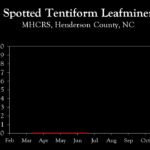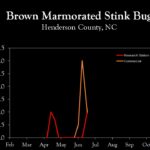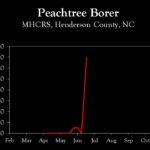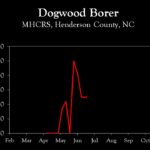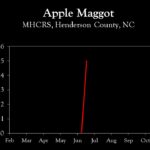WNC Orchard Insect Pest Populations – June 19, 2024
go.ncsu.edu/readext?1009977
en Español / em Português
El inglés es el idioma de control de esta página. En la medida en que haya algún conflicto entre la traducción al inglés y la traducción, el inglés prevalece.
Al hacer clic en el enlace de traducción se activa un servicio de traducción gratuito para convertir la página al español. Al igual que con cualquier traducción por Internet, la conversión no es sensible al contexto y puede que no traduzca el texto en su significado original. NC State Extension no garantiza la exactitud del texto traducido. Por favor, tenga en cuenta que algunas aplicaciones y/o servicios pueden no funcionar como se espera cuando se traducen.
Português
Inglês é o idioma de controle desta página. Na medida que haja algum conflito entre o texto original em Inglês e a tradução, o Inglês prevalece.
Ao clicar no link de tradução, um serviço gratuito de tradução será ativado para converter a página para o Português. Como em qualquer tradução pela internet, a conversão não é sensivel ao contexto e pode não ocorrer a tradução para o significado orginal. O serviço de Extensão da Carolina do Norte (NC State Extension) não garante a exatidão do texto traduzido. Por favor, observe que algumas funções ou serviços podem não funcionar como esperado após a tradução.
English
English is the controlling language of this page. To the extent there is any conflict between the English text and the translation, English controls.
Clicking on the translation link activates a free translation service to convert the page to Spanish. As with any Internet translation, the conversion is not context-sensitive and may not translate the text to its original meaning. NC State Extension does not guarantee the accuracy of the translated text. Please note that some applications and/or services may not function as expected when translated.
Collapse ▲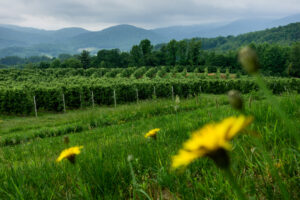 Little has changed in the past week in terms of arthropod pests of apples. We are currently between first and second generation of the codling moth, and second-generation oriental fruit moth populations remain typically low. The major concerns are European red mites, leafhoppers and aphids. Leafhoppers and aphids have been considerably lower than normal this year, and with new shoot growth beginning to harden off and becoming less attractive to aphids and leafhoppers, the potential need for insecticidal control also declines. With warm and dry conditions in the forecast, mites remain a key threat.
Little has changed in the past week in terms of arthropod pests of apples. We are currently between first and second generation of the codling moth, and second-generation oriental fruit moth populations remain typically low. The major concerns are European red mites, leafhoppers and aphids. Leafhoppers and aphids have been considerably lower than normal this year, and with new shoot growth beginning to harden off and becoming less attractive to aphids and leafhoppers, the potential need for insecticidal control also declines. With warm and dry conditions in the forecast, mites remain a key threat.
Based on model predictions for the Southeast, optimum timing of insecticide sprays for low to moderate codling moth populations is between 1400 and 1450 DD. This is expected to occur early next week in lower elevation orchards in Cleveland County, and in about two weeks in Henderson County and similar elevations. However, in orchards using mating disruption or with very low populations based on pheromone trap captures, insecticide sprays are often not needed for the second generation. Pheromone trap monitoring is an important tool to gauge the need for insecticides.
Learn more about southeastern apple insect pests at the Apple Insect Management page.
2024 Average Weekly Trap Captures
| HENDERSON COUNTY | |||
| Insects per trap | |||
| Jun 3 | Jun 10 | Jun 19 | |
| Codling moth | 0.0 | 3.5 | 1.0 |
| Oriental fruit moth | 3.5 | 29.0 | 18.0 |
| Tufted apple bud moth | 25.0 | 16.0 | 1.0 |
| Redbanded leafroller | 0.0 | 0.0 | 0.0 |
| Obliquebanded leafroller | 0.0 | 2.0 | 0.0 |
| Lesser appleworm | 2.0 | 2.0 | 0.0 |
| Apple maggot (abandoned and research orchards) | – | 0.0 | 0.5 |
| Brown marmorated stink bug (commercial) | 0.5 | 3.0 | 1.0 |
| Brown marmorated stink bug (unsprayed) | 0.0 | 0.0 | 1.0 |
| Spotted tentiform leafminer | 0.0 | 0.0 | 0.0 |
| Dogwood borer | 41.0 | 25.0 | 25.0 |
| Peachtree borer | 0.0 | 0.0 | 14.0 |
| Lesser peachtree borer | 3.0 | 18.0 | 14.0 |
| San Jose scale | 0.0 | 0.0 | 20.0 |
*Note that these averages illustrate only the timing of insect emergence and fluctuations in populations, and are not representative of population levels in any given orchard. The only way to have an accurate assessment of an individual orchard’s populations is to set up traps in that orchard.
2024 Accumulated Degree Days
| HENDERSON COUNTY | ||||
| Jun 3 | Jun 10 | Jun 19 | ||
| Codling moth (Biofix: April 15) | 679 | 814 | 1010 | |
| Oriental fruit moth (Biofix: March 15) | 1202 | 1372 | 1614 | |
| Tufted apple bud moth (Biofix: April 15) | 908 | 1078 | 1320 | |



